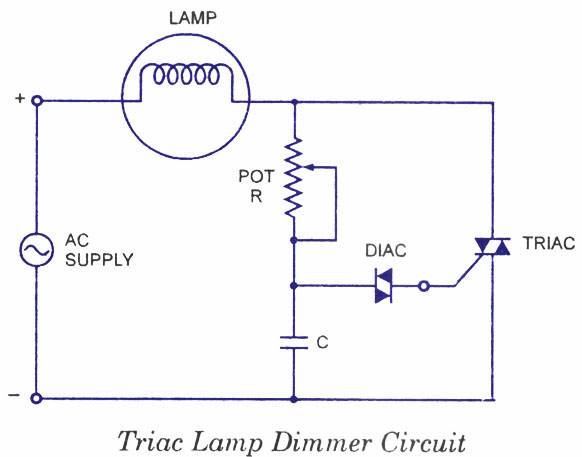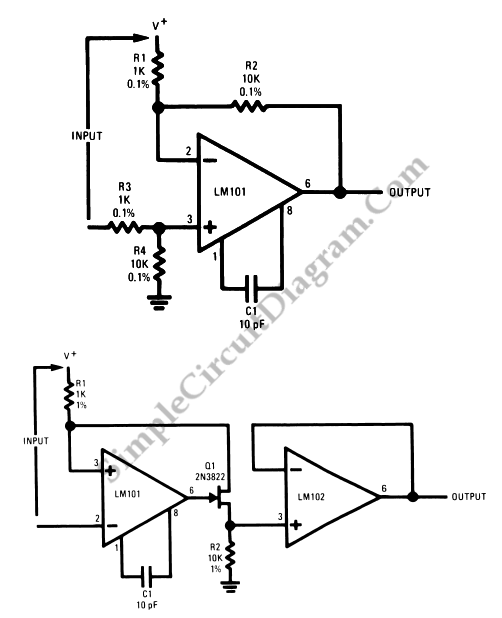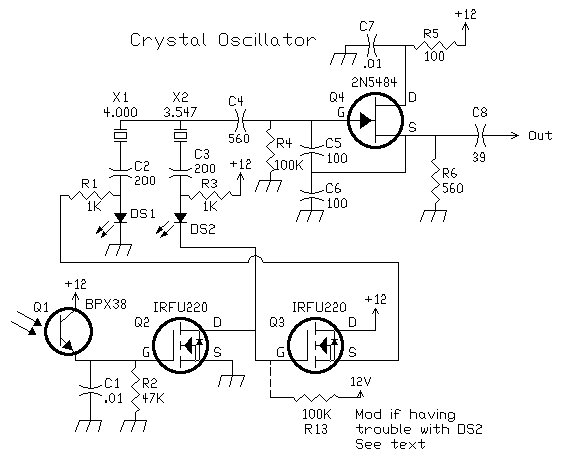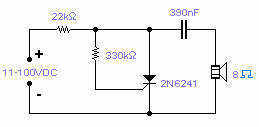
PLL Oscillator for Medium Wave Application
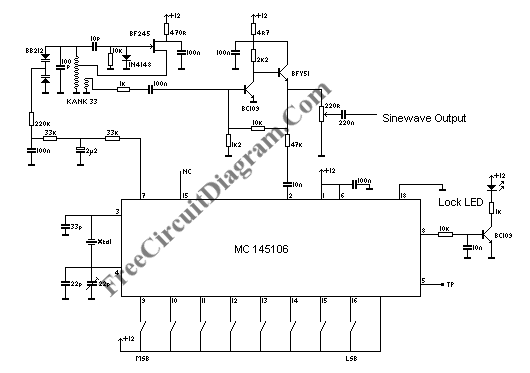
A PLL (Phase-Locked Loop) oscillator is utilized to achieve a very stable frequency with minimal distortion in the sine wave output. Its stability is comparable to that of crystal-based oscillators, while the distortion level of the sine wave output is similar to that of LC-based oscillators. The PLL control method in a PLL oscillator involves adjusting the frequency of a voltage-controlled oscillator (VCO). The VCO operates as an LC-based oscillator, where the capacitor is a varactor—a variable capacitor whose capacitance value changes depending on the applied voltage. This control voltage adjusts the frequency of the VCO. The voltage control is derived from a phase difference detector that identifies the phase difference between the crystal reference clock and the VCO output. If a discrepancy in frequency exists, the error signal from the phase difference detector will correct the VCO until its frequency aligns with the reference, maintaining a specific phase difference that produces the control voltage required to stabilize the VCO frequency. To achieve a frequency higher than that of the PLL oscillator's internal reference clock, a frequency divider can be placed between the VCO and the phase difference detector. This configuration allows the PLL control system to maintain the divided VCO output frequency equal to the reference frequency, resulting in the PLL oscillator output having a frequency that is the reference frequency multiplied by the division factor of the programmed divider. A simple PLL oscillator circuit can be constructed using the MC145106 integrated circuit, requiring only an external VCO to generate a sine wave output. The crystal frequency is set to 4608 kHz for European medium wave frequency spacing standards and 5120 kHz for the USA. The power supply must be regulated and adequately decoupled.
The PLL oscillator circuit operates by leveraging the principles of feedback and phase comparison to maintain a stable output frequency. The core components include the VCO, phase detector, loop filter, and frequency divider. The VCO generates an oscillating signal, the frequency of which is influenced by the control voltage. The phase detector compares the phase of the VCO output with that of the reference clock, producing an error signal that reflects the phase difference between the two signals. This error signal is then filtered by the loop filter to produce a smooth control voltage, which adjusts the capacitance of the varactor in the VCO, thereby fine-tuning its frequency.
The integration of a frequency divider allows for output frequencies that exceed the reference frequency, effectively multiplying the reference frequency by a predetermined factor. This is particularly beneficial in applications requiring higher frequencies than the reference clock can provide. The MC145106 IC serves as the primary control unit for the PLL, facilitating the necessary adjustments to maintain frequency stability and low distortion.
The design considerations for the PLL oscillator include ensuring that the power supply is stable and well-decoupled to prevent noise from affecting the oscillator's performance. Additionally, the selection of the varactor and other components should be made based on the desired frequency range and application requirements. Proper layout and grounding techniques are essential to minimize interference and enhance the overall performance of the PLL oscillator circuit.PLL oscillator is used to get very stable frequency woth very low distortion of sine wave output. The stability is equal to crystal-based oscillator, and the low distortion level of the sine wave output is equal to LC based oscillator. The method ofPLL control inPLL oscillatois done by adjusting the frequency of sine wave VCO (voltage controlled o
scillaltor). The VCO is an LC based oscillator, but the capacitor is not a fixed one, but it`s a varactor, a variable capacitor which its capacitance value is variable depends on the applied voltage. The control of this voltage change the frequency of the VCO. This voltage control is coming from a phase difference detector that detect the phase difference between the crystal reference clock and the VCO output.
If the frequency of the VCO output is different then the error signal from the phase difference detector will try to correct the VCO until the VCO has the same frequency and the phase difference is slipped at certain level to produce the voltage control that maintain the VCO frequency. To get the frequency higher than thePLL oscillator`s internal reference clock, we just need to insert a frequency divider between the VCO and the phase difference detector.
Using this method, now the PLL control system will maintain the divided VCO output frequency to be same with the reference, so thePLL Oscillatorthat come directly from the VCO has the frequency of the reference frequency multiplied by the division value of the programmed divider. SimplePLL oscillatorcircuit can be constructed using MC145106 IC, and it need only external VCO to produce a sine wave output.
The crystal frequency is 4608 kHz for European medium wave frequency spacing standart, and 5120 for USA. The power supply must be regulated and well decoupled. 🔗 External reference
The PLL oscillator circuit operates by leveraging the principles of feedback and phase comparison to maintain a stable output frequency. The core components include the VCO, phase detector, loop filter, and frequency divider. The VCO generates an oscillating signal, the frequency of which is influenced by the control voltage. The phase detector compares the phase of the VCO output with that of the reference clock, producing an error signal that reflects the phase difference between the two signals. This error signal is then filtered by the loop filter to produce a smooth control voltage, which adjusts the capacitance of the varactor in the VCO, thereby fine-tuning its frequency.
The integration of a frequency divider allows for output frequencies that exceed the reference frequency, effectively multiplying the reference frequency by a predetermined factor. This is particularly beneficial in applications requiring higher frequencies than the reference clock can provide. The MC145106 IC serves as the primary control unit for the PLL, facilitating the necessary adjustments to maintain frequency stability and low distortion.
The design considerations for the PLL oscillator include ensuring that the power supply is stable and well-decoupled to prevent noise from affecting the oscillator's performance. Additionally, the selection of the varactor and other components should be made based on the desired frequency range and application requirements. Proper layout and grounding techniques are essential to minimize interference and enhance the overall performance of the PLL oscillator circuit.PLL oscillator is used to get very stable frequency woth very low distortion of sine wave output. The stability is equal to crystal-based oscillator, and the low distortion level of the sine wave output is equal to LC based oscillator. The method ofPLL control inPLL oscillatois done by adjusting the frequency of sine wave VCO (voltage controlled o
scillaltor). The VCO is an LC based oscillator, but the capacitor is not a fixed one, but it`s a varactor, a variable capacitor which its capacitance value is variable depends on the applied voltage. The control of this voltage change the frequency of the VCO. This voltage control is coming from a phase difference detector that detect the phase difference between the crystal reference clock and the VCO output.
If the frequency of the VCO output is different then the error signal from the phase difference detector will try to correct the VCO until the VCO has the same frequency and the phase difference is slipped at certain level to produce the voltage control that maintain the VCO frequency. To get the frequency higher than thePLL oscillator`s internal reference clock, we just need to insert a frequency divider between the VCO and the phase difference detector.
Using this method, now the PLL control system will maintain the divided VCO output frequency to be same with the reference, so thePLL Oscillatorthat come directly from the VCO has the frequency of the reference frequency multiplied by the division value of the programmed divider. SimplePLL oscillatorcircuit can be constructed using MC145106 IC, and it need only external VCO to produce a sine wave output.
The crystal frequency is 4608 kHz for European medium wave frequency spacing standart, and 5120 for USA. The power supply must be regulated and well decoupled. 🔗 External reference
